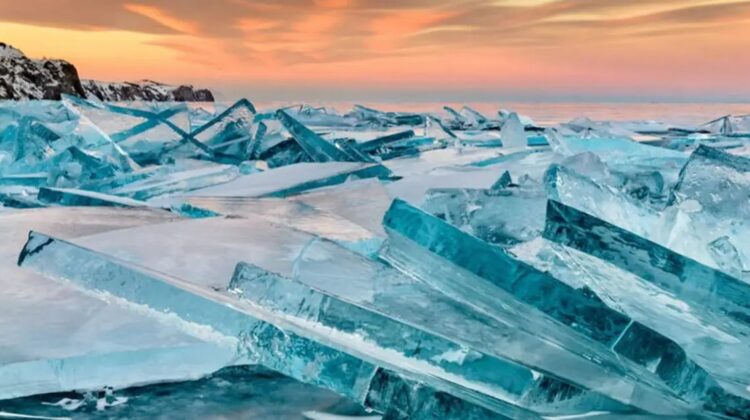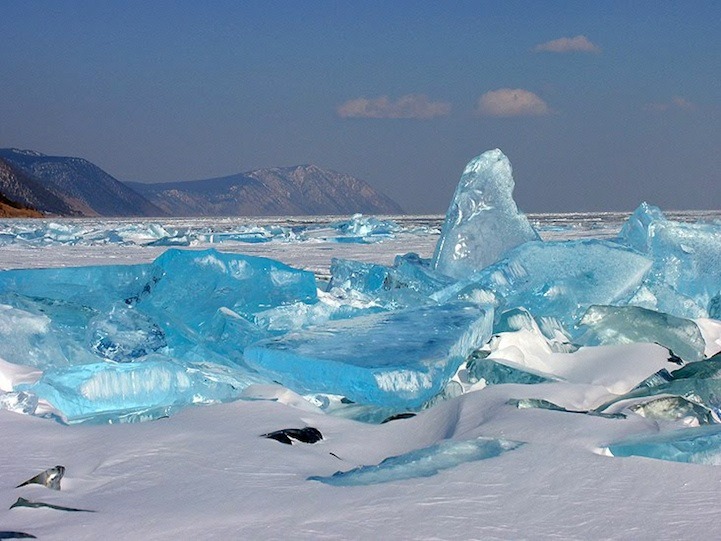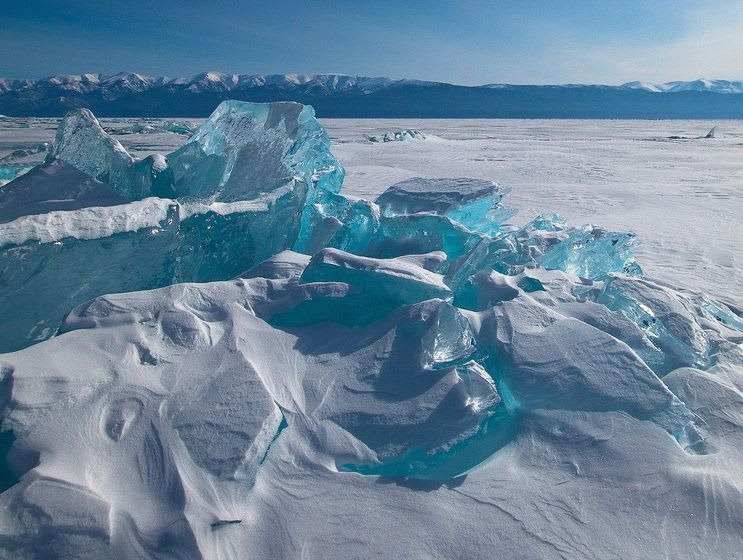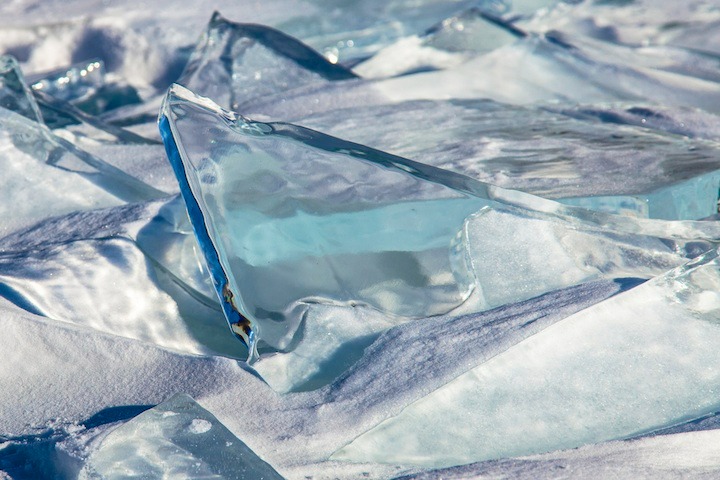
Lake Baikal, nestled in the heart of Siberia, Russia, is more than just a body of water. It’s the world’s oldest and deepest freshwater lake, holding a staggering one-fifth of the Earth’s unfrozen freshwater. But during the winter months, a captivating transformation takes place, turning the lake into a wonderland of shimmering emerald ice.

For roughly five months, from January to May, Lake Baikal’s surface freezes over. However, the lake’s incredible clarity allows visitors to peer an astonishing 130 feet below the ice surface. The real magic unfolds around March, when a specific combination of wind, temperature fluctuations, frost, and sunshine create a breathtaking spectacle.

Cracks begin to form in the ice sheet, along with towering “ice hummocks” – jagged protrusions that rise dramatically from the frozen surface. Here’s where the emerald magic happens. Sunlight filtering through the fractured ice transforms these features into a dazzling display of turquoise hues. The transparent ice shimmers like scattered shards of emerald glass, a sight unlike anything else on Earth.

These mesmerizing formations are caused by the immense pressure exerted on the ice sheet. Uneven pressure points, coupled with variations in ice structure and temperature, contribute to the dramatic fracturing. The result? A breathtaking natural work of art.

While the exact timing of this phenomenon can vary slightly year-to-year, witnessing the emerald ice is a bucket list experience for many. For adventurous travelers, tours are available that allow you to explore the frozen landscape, venturing out onto the ice itself. Imagine ice skating on a surface so clear you can see the depths of the world’s most ancient lake below!

Lake Baikal’s emerald ice is a powerful reminder of the beauty and intrigue hidden within our natural world. It’s a testament to the delicate balance of nature, where science and wonder converge to create a truly unforgettable spectacle.

Leave a Reply